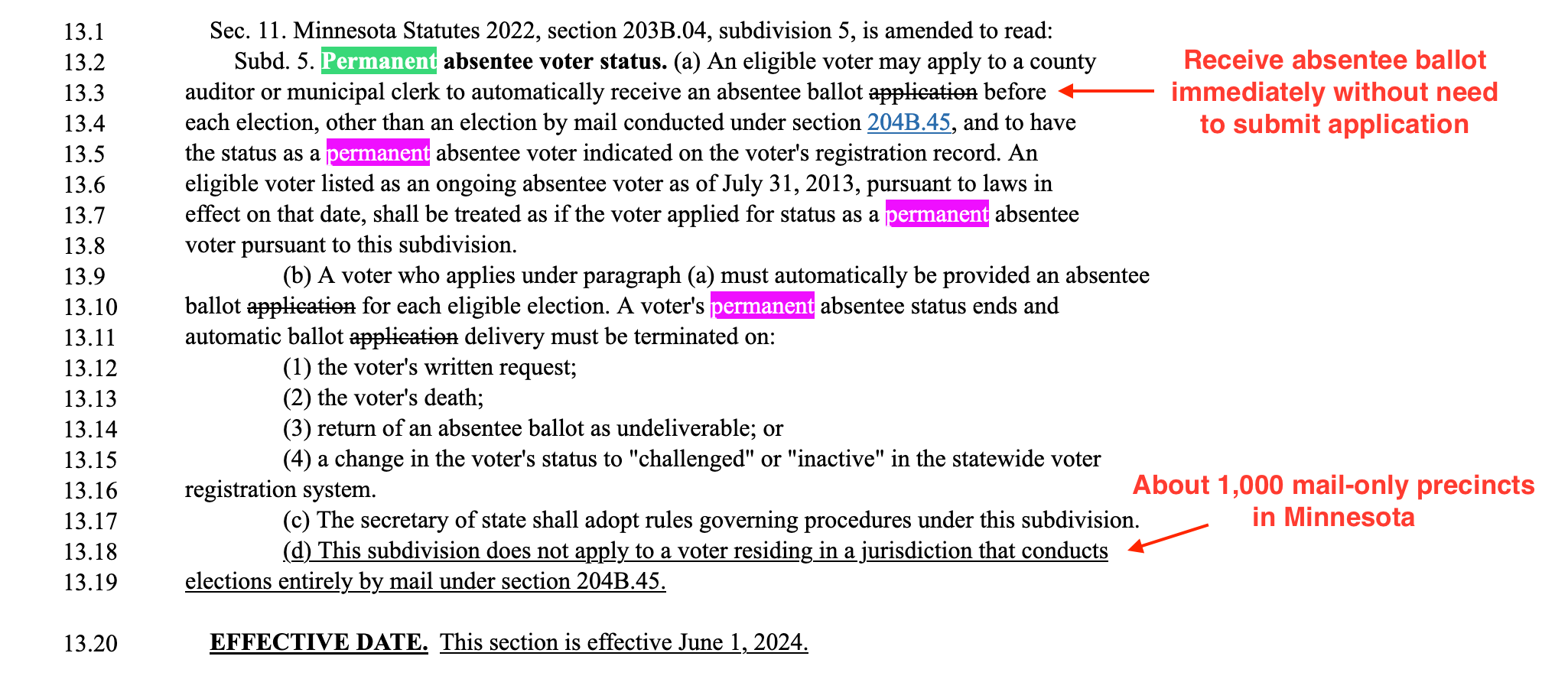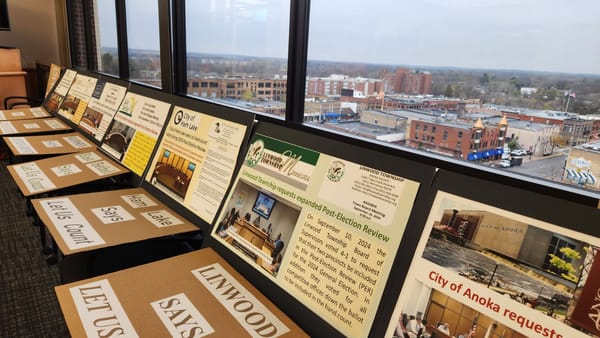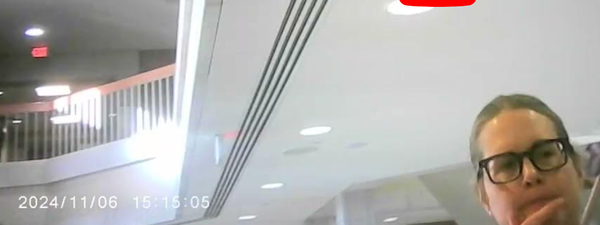Fraud leads to more fraud
A brief analysis of SF0003, a large election bill on the table in the Minnesota Legislature
It is well understood that in 2020 election laws were circumvented in Minnesota to waive witness signature requirements (an absentee mail-in vote could be submitted without a witness signature), which allowed mass mail-in and absentee ballots eclipsing 1.9 million, about 60% of all ballots cast, covered in more detail in the free digital book, [S]elections in Minnesota.
(Even with signature requirements, the metrics and auditing of whether signatures for voters themselves match signatures on file is suspect in my opinion and in need of more stringent checks—which is why citizens have increasingly signed up or have tried to sign up to be part of the absentee ballot boards which are responsible for accepting or rejecting mail-in ballots in the 46 days leading up to election day.)
The results of the 2020 elections combined with the procedural and behavioral carryover into 2021 municipal elections and the 2022 midterms have led to a makeup of the Minnesota House and Senate which could lead to further deterioration of constitutional standards relating to voting, as evidenced by current election bills brought in the House and Senate during the 93rd Legislative Session.
If elections are supposed to be one of the constitutional mechanisms for redressing grievances (vote out those in power who have failed to represent the will of those who elected them or who have failed to fulfill their oaths of office), what happens if elections themselves could be subverted? It could be argued we are seeing the results of that overtly right now.
The party told you to reject the evidence of your eyes and ears. It was their final, most essential command. His heart sank as he thought of the enormous power arrayed against him. The ease with which any Party intellectual would overthrow him in debate, the subtle arguments which he would not be able to understand, much less answer. And yet he was in the right! They were wrong and he was right.
—1984, by George Orwell
While at the Senate Building in St. Paul on Thursday testifying in opposition to SF2270 (ranked choice voting), it occurred to me that I was overdue in analyzing a few other election bills that have arrived this session, such as SF0003. We are now just over half way through the Minnesota Legislative Session for this spring, which ends mid May 2023.
Election bills in the Senate
Election bills in the House
SF0003
Let’s start this series of posts with the big one, SF0003.
This bill should be broken up into smaller bills, because it addresses a number of issues that are not all related.
That way the writing of the bill would be simplified and it would be easier to vote on for the senators.
The bill has three articles:
ARTICLE 1 - STRENGTHEN THE FREEDOM TO VOTE
ARTICLE 2 - PROTECT VOTERS AND OUR ELECTIONS SYSTEM
ARTICLE 3 - MODERNIZE CAMPAIGN FINANCE SYSTEM TO EMPOWER VOTERS AND INCREASE DISCLOSURE OF SECRET SPENDING
In this post I’ll cover a few aspects of Article 1 and 2, saving Article 3 for a future post.
Here’s the bill’s summary:
A bill for an act
relating to elections; modifying provisions related to voter registration; absentee
voting; requiring voting instructions and sample ballots to be multilingual and
interpreters to be provided in certain situations; regulating intimidation, deceptive
practices, and interference with voter registration and voting; campaign finance;
expanding the definition of express advocacy; providing penalties; requiring reports;
amending Minnesota Statutes 2022, sections 10A.01, subdivision 16a; 10A.27,
subdivision 11; 13.607, by adding a subdivision; 171.06, subdivision 3; 201.054,
subdivisions 1, 2; 201.061, by adding a subdivision; 201.071, subdivision 1;
201.091, subdivision 4; 201.161; 201.162; 203B.04, subdivisions 1, 5; 203B.06,
subdivisions 1, 3; 203B.12, by adding subdivisions; 203B.121, subdivision 2;
211B.15, subdivisions 1, 7b, by adding subdivisions; 211B.32, subdivision 1;
proposing coding for new law in Minnesota Statutes, chapters 204B; 211B.
BE IT ENACTED BY THE LEGISLATURE OF THE STATE OF MINNESOTA:
There’s a lot to unpack here:
Key changes in SF0003 -
- register to vote starting at age 16
- automatic voter registration
- register as a permanent absentee voter
- mail-in ballots automatically sent to every permanent absentee voter
- intimidation
Let’s take these one at a time, with my brief comments after each quoted section of the bill.
Application to Vote at 16 years of age
Sec. 3. Minnesota Statutes 2022, section 201.054, subdivision 1, is amended to read:
(b) An individual who is under the age of 18, but who is at least 16 years of age and
otherwise eligible, may submit a voter registration application as provided in section 201.061,
subdivisions 1 and 1b.
Preregistration for 16 year olds
Sec. 5. Minnesota Statutes 2022, section 201.061, is amended by adding a subdivision to read:
Subd. 1b. Preregistration.
An individual who is under the age of 18, but who is at least
16 years of age and meets all requirements for eligibility in section 201.014, except for age,
may submit a voter registration application or be automatically registered under section
201.161 at the address in which the voter maintains residence pursuant to subdivision 1.
Nothing in this section shall be construed to entitle an individual to appear on a polling
place roster or cast a ballot at an election if the individual does not meet all eligibility
requirements for voting, including age.
Why the rush to pre-register 16- and 17-year-olds?
Not part of public information
Data on applicants submitted pursuant to
section 201.061, subdivision 1b, are not part of the public information list until the voter is
registered or has voting history.
In other words the State gains access but anyone researching or tracking election data does not.
Automatic Voter Registration (worth reading all 8 subdivisions of section 8 in full here)
Sec. 8. Minnesota Statutes 2022, section 201.161, is amended to read:
201.161 DRIVER'S LICENSE AND IDENTIFICATION CARD APPLICATIONS
AUTOMATIC VOTER REGISTRATION.
Subdivision 1. Automatic registration.
(a) Except as otherwise provided in this section,
an individual must be registered to vote if the individual is eligible to vote under section
201.014 and properly completes and submits one of the following applications, if the
application includes documentation or verification of United States citizenship or records
reflect that the applicant provided proof of citizenship during a previous agency transaction:
(1) an application for a new or renewed Minnesota driver's license or identification card;
(2) an initial or renewal application for MinnesotaCare under chapter 256L or medical
assistance under chapter 256B; or
(3) an application for benefits or services to a state agency participating under subdivision
5.
(b) If a registered voter supplies a different name or address as part of an application
under this subdivision from the name and address in the voter registration record, the
registrant's voter registration record must be updated to reflect the name or address
information provided.
Why should voter registration be automatic when it is already under current election law very easy to register to vote on election day (same day registration) as evidenced by the rates surpassing 10% in some Minnesota counties?
Register as a permanent absentee voter
Sec. 6. Minnesota Statutes 2022, section 201.071, subdivision 1, is amended to read:
a box to indicate a voter's preference
to join the permanent absentee voter list;
Permanent absentee voter status
Sec. 11. Minnesota Statutes 2022, section 203B.04, subdivision 5, is amended to read:
Subd. 5. Permanent absentee voter status.
(a) An eligible voter may apply to a county
auditor or municipal clerk to automatically receive an absentee ballotapplicationbefore
each election, other than an election by mail conducted under section 204B.45, and to have
the status as a permanent absentee voter indicated on the voter's registration record. An
eligible voter listed as an ongoing absentee voter as of July 31, 2013, pursuant to laws in
effect on that date, shall be treated as if the voter applied for status as a permanent absentee
voter pursuant to this subdivision.
(b) A voter who applies under paragraph (a) must automatically be provided an absentee
ballotapplicationfor each eligible election. A voter's permanent absentee status ends and
automatic ballotapplicationdelivery must be terminated on:
(1) the voter's written request;
(2) the voter's death;
(3) return of an absentee ballot as undeliverable; or
(4) a change in the voter's status to "challenged" or "inactive" in the statewide voter
registration system.
(c) The secretary of state shall adopt rules governing procedures under this subdivision.
(d) This subdivision does not apply to a voter residing in a jurisdiction that conducts
elections entirely by mail under section 204B.45.

With this setup, if a 16 or 17 year old who has pre-registered to vote and opted in to permanent absentee status in Minnesota goes to college in another part of Minnesota, or in another state, but does not complete a change of address (most college students in college provided dormitories do not take up permanent residence at the college), then there will be an absentee ballot provided to the original address.
Meanwhile the student, once turning 18, will also be able to same day register wherever they are attending college (if in Minnesota) as well in some other states. (But the absentee ballot would still arrive at the original address.) This conversation gets into potential legislation to sort out the management of clean voter rolls.
Section (d) of Subd. 5. is highlighted in the above graphic because about 1,000 precincts out of Minnesota’s more than 4,000 precincts are currently mail-in only precincts—in these precincts voters automatically receive a mail-in ballot and cannot vote on election day at an in-person polling place. This can be changed by local decision at city councils, township boards, and county commissions. (More to come on how to do this on Project Minnesota.)
Intimidation and Interference with the Voting Process; Penalties
Sec. 2. [211B.075] INTIMIDATION AND INTERFERENCE WITH THE VOTING
PROCESS; PENALTIES.
Subdivision 1. Intimidation.
(a) A person may not directly or indirectly use or threaten
force, coercion, violence, restraint, damage, harm, or loss, including loss of employment
or economic reprisal against:
(1) any person with the intent to compel that person to register or abstain from registering
to vote, vote or abstain from voting, or vote for or against a candidate or ballot question; or
(2) any person with the intent to impede that person's efforts to encourage another to
cast a ballot or assist another in registering to vote, traveling to a polling place, casting a
ballot, or participating in any other aspect of the election process.
(b) Notwithstanding paragraph (a), in a civil action brought to prevent and restrain
violations of this subdivision or to require the payment of civil penalties, the moving party
may show that the action or attempted action would cause a reasonable person to feel
intimidated. The moving party does not need to show that the actor intended to cause the
victim to feel intimidated.
Subd. 2. Deceptive practices.
(a) No person may, within 60 days of an election, cause
information to be transmitted by any means that the person:
(1) intends to impede or prevent another person from exercising the right to vote; and
(2) knows to be materially false.
(b) The prohibition in this subdivision includes but is not limited to information regarding
the time, place, or manner of holding an election; the qualifications for or restrictions on
voter eligibility at an election; and threats to physical safety associated with casting a ballot.
Subd. 3. Interference with registration or voting.
No person may intentionally hinder,
interfere with, or prevent another person from voting, registering to vote, or aiding another
person in casting a ballot or registering to vote.
Subd. 4. Vicarious liability; conspiracy.
A person may be held vicariously liable for
any damages resulting from the violation of this section and may be identified in an order
restraining violations of this section if that person:
(1) intentionally aids, advises, hires, counsels, abets, incites, compels, or coerces a person
to violate any provision of this section or attempts to aid, advise, hire, counsel, abet, incite,
compel, or coerce a person to violate any provision of this section; or
(2) conspires, combines, agrees, or arranges with another to either commit a violation
of this section or aid, advise, hire, counsel, abet, incite, compel, or coerce a third person to
violate any provision of this section.
Subd. 5. Criminal penalties; civil remedies.
(a) A person who violates this section is
guilty of a gross misdemeanor.
(b) The attorney general or any person injured by an act prohibited by this section may
bring a civil action to prevent or restrain a violation of this section if there is a reasonable
basis to believe that an individual or entity is committing or intends to commit a prohibited
act.
(c) The attorney general, or any person injured by an act prohibited by this section, may
bring a civil action pursuant to section 8.31 to recover damages, together with costs of
investigation and reasonable attorney fees, and receive other equitable relief as determined
by the court. An action brought by any person under section 8.31, subdivision 3a, is in the
public interest. In addition to all other damages, the court may impose a civil penalty of up
to $1,000 for each violation.
(d) Civil remedies allowable under this section are cumulative and do not restrict any
other right or remedy otherwise available. An action for a penalty or remedy under this
section must be brought within two years of the date the violation is alleged to have occurred.
The complaint process provided in sections 211B.31 to 211B.36 does not apply to violations
of this section.
This part of SF0003 reminds me of SF4217 from the 2022 legislative session, which I commented on here.
More to unpack
Article 3 of SF0003 is titled “MODERNIZE CAMPAIGN FINANCE SYSTEM TO EMPOWER VOTERS AND INCREASE DISCLOSURE OF SECRET SPENDING”.
I’ll cover Article 3 in a future post.




